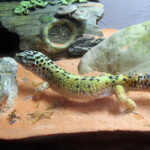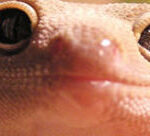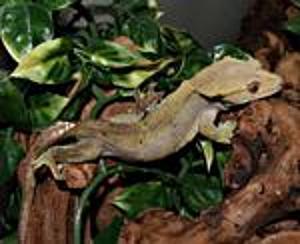Unfortunately, sometimes, when a gecko is not eating, or is at the tail end of it’s life, you have to turn to force feeding leopard geckos to keep them alive. Other times, you have received liquid medicine from a veterinarian, and you need to administer a dosage, but your gecko won’t eat the food itself. What do you do?
First, you need to realize that not all leopard geckos are the same. Some leopard gecko diets indicate the animal should be eating every day, while others say every other day, while still others vote for twice a week at the most. Use your judgment to administer an appropriate leopard gecko diet.
Liquid medicine is easy – simply use an eyedropper to dribble a little bit of the medicine right on the nose of your leopard gecko, being careful of the dosage. Estimation is going to have to rule the day, since the gecko is just as likely to lick it off as they are to try wiping it on a nearby surface, but generally, it’s quite alright to get them to take medicine this way.
Force feeding them actual foods, on the other hand, is not easy at all. Before we get into that, though, I would highly recommend reading my article on leopard geckos not eating, since it’s usually much better and easier to change that than it is to start a force feeding regimen.
Anyways, if you’ve decided that the force feeding is the way to go, you need to realize that they aren’t going to put up with live food for this process, and that it’s got to be easy to digest. If they’re not eating, they’re certainly not going to chew and swallow while you’ve pried open their jaws with a tweezer (not recommended, by the way).
Take whatever food you planned on giving them and use a food processor or a coffee grinder to create a pulp (yes, it’s gross, but it works). Add water to make it viscous, and then you can drip it on their nose just like you would with a liquid medicine. They’re going to lick it off at some point; not only will it get in the way of their breathing, but it’s also going to be a constant bother until it gets removed.
Force feeding, obviously, is not for very many leopard geckos. It simply isn’t a good method of dealing with whatever problem they have going on in their lives. Do a Google search for their symptoms – it’s usually a darkening of the skin, some kind of leopard gecko poop problem, or a viral infection. Better yet, take your animal to the vet and seek some extra knowledge, and hopefully some medication. Most importantly, read up on your animal and learn what kinds of things you can do as an owner to make it’s life better. The small things, like not having a light, or having a degree or two too much heat, make a huge difference.





